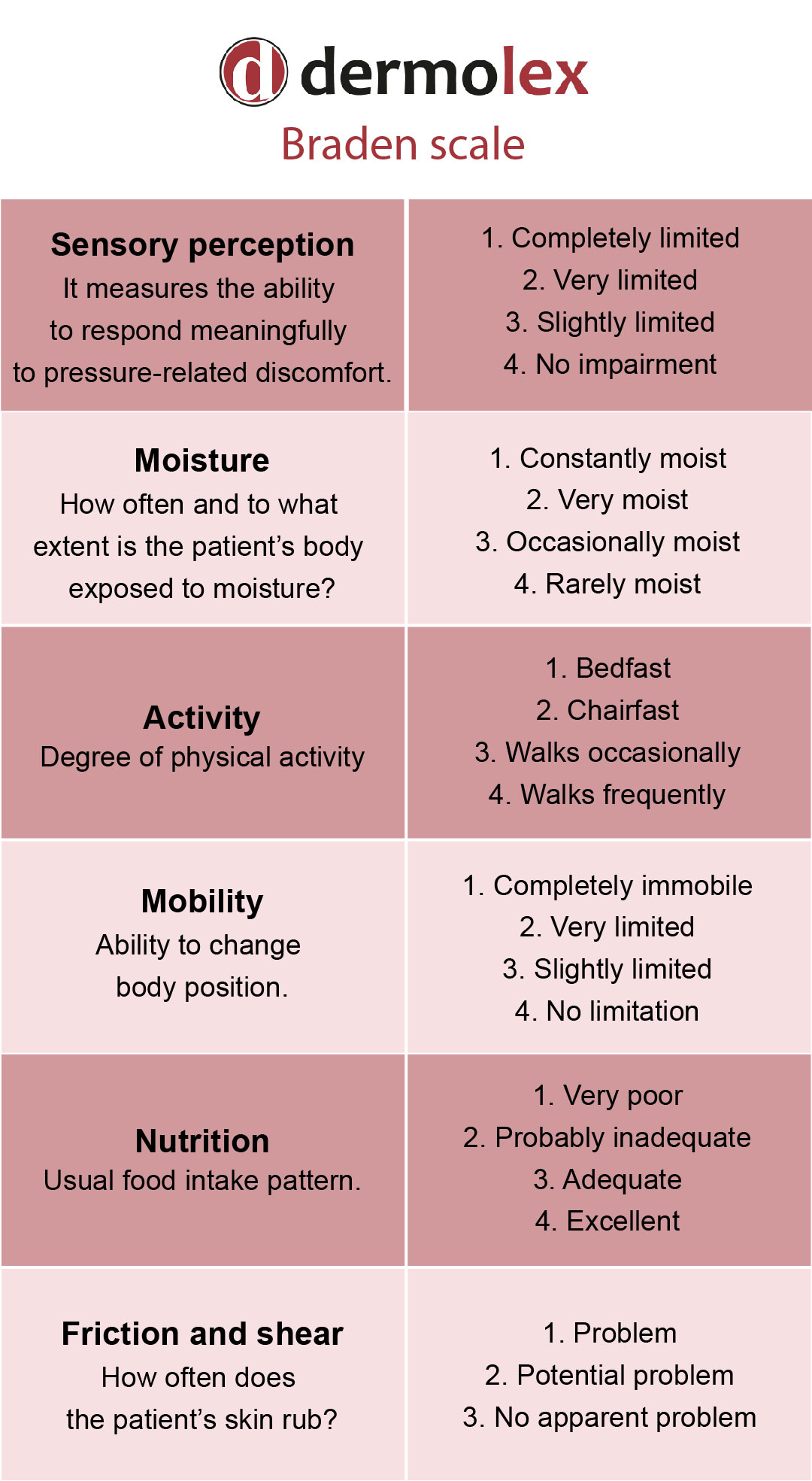Today, I want to talk about an important tool in healthcare called the Braden Scale for Predicting Pressure Sore Risk. For those who are not familiar, pressure sores, also known as bedsores or pressure ulcers, are painful skin injuries that occur when there is prolonged pressure on the skin. These sores can be quite serious, leading to infections and other complications. That’s where the Braden Scale comes in handy.
The Braden Scale: A Valuable Instrument
The Braden Scale is a widely used assessment tool that helps healthcare professionals predict the risk of developing pressure sores in individuals who are bedridden or have limited mobility. It considers several risk factors and assigns scores to each factor to determine the overall risk level. Let’s take a closer look at some key aspects of the Braden Scale:
- Sensory Perception
 The sensory perception category assesses a person’s ability to perceive sensations like pain or discomfort. Individuals with poor sensory perception are at a higher risk of developing pressure sores as they might not be able to feel the discomfort caused by prolonged pressure.
The sensory perception category assesses a person’s ability to perceive sensations like pain or discomfort. Individuals with poor sensory perception are at a higher risk of developing pressure sores as they might not be able to feel the discomfort caused by prolonged pressure.
- Moisture
 Moisture on the skin can increase the risk of developing pressure sores. This category evaluates the amount of moisture present on the skin, such as sweat or urine, and determines the risk level accordingly.
Moisture on the skin can increase the risk of developing pressure sores. This category evaluates the amount of moisture present on the skin, such as sweat or urine, and determines the risk level accordingly.
- Activity
 Assessing the activity level helps to determine the risk associated with mobility. Individuals who are immobile or have limited mobility are at a higher risk due to the constant pressure on certain body areas.
Assessing the activity level helps to determine the risk associated with mobility. Individuals who are immobile or have limited mobility are at a higher risk due to the constant pressure on certain body areas.
- Mobility
 This category evaluates the ease of changing and maintaining body positions. If someone has difficulty with mobility and cannot change positions regularly, the risk of pressure sores increases.
This category evaluates the ease of changing and maintaining body positions. If someone has difficulty with mobility and cannot change positions regularly, the risk of pressure sores increases.
- Nutrition
 Proper nutrition plays a crucial role in maintaining healthy skin. Individuals who have poor nutrition are more susceptible to developing pressure sores as their skin lacks the necessary nutrients to withstand prolonged pressure.
Proper nutrition plays a crucial role in maintaining healthy skin. Individuals who have poor nutrition are more susceptible to developing pressure sores as their skin lacks the necessary nutrients to withstand prolonged pressure.
- Friction and Shear
 Friction and shear occur when the skin rubs against another surface or when layers of skin slide against each other. This category assesses the risk level associated with these forces, as they can damage the skin and contribute to pressure sore development.
Friction and shear occur when the skin rubs against another surface or when layers of skin slide against each other. This category assesses the risk level associated with these forces, as they can damage the skin and contribute to pressure sore development.
It is important to note that the Braden Scale is just one of many assessment tools used in healthcare. Its purpose is to help healthcare professionals identify individuals at a higher risk for pressure sores, allowing for early intervention and preventive measures.
By using the Braden Scale, healthcare providers can implement personalized interventions to prevent discomfort and pain caused by pressure sores. Effective preventive measures include repositioning the individual regularly, providing support surfaces (such as special mattresses or cushions), maintaining skin hygiene, and ensuring proper nutrition and hydration.
The Braden Scale is a valuable asset in healthcare settings as it aids in the early identification and prevention of pressure sores. By considering various risk factors, healthcare professionals can provide individualized care plans that promote optimal skin health and overall well-being.
If you or your loved one is at risk for pressure sores, remember to consult with healthcare professionals who can assess the situation and recommend appropriate preventive measures based on the Braden Scale assessment.